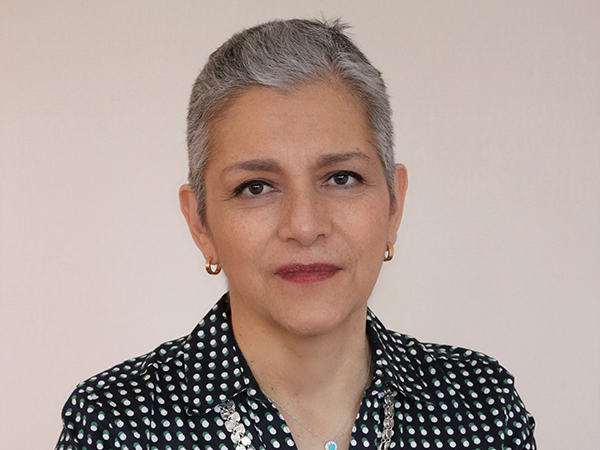Children of different races and ethnicities, even living in the same metro area a few miles apart, are often growing up in neighborhoods with radically different opportunities to thrive, according to a new index of neighborhood features that compares data on all 73,000 census tracts in the country. The project, the Child Opportunity Index (COI) 3.0, analyzes measures of opportunity across three domains: education, health and environment, and social and economic, and ranks neighborhoods by a Child Opportunity Score ranging from 1-100. An accompanying report finds that in the nation’s 100 largest metro areas, children face significant inequities in opportunity. The typical White child lives in a neighborhood with an opportunity score of 74 out of 100, whereas that score is 30 for Black children, and 33 for Hispanic children. The Index is being released today by the diversitydatakids.org project at Brandeis University.
The data included in the report shed light on two related challenges:
Metro areas can either share or hoard opportunity.
For instance, Detroit, Michigan, and Fayetteville, Arkansas, have just about the same overall opportunity score: 57 and 56, respectively. But they have dramatically different inequities in the opportunity that typical children may experience: an 88-point gap between high- and low-opportunity neighborhoods in Detroit, compared to a 59-point gap in Fayetteville. In short, Fayetteville shares opportunity, whereas Detroit tends to hoard opportunity in select neighborhoods.
Metro areas can either support or hinder equitable access to opportunity by race and ethnicity.
In the 100 largest metro areas, Black and Hispanic children almost universally live in lower opportunity neighborhoods than White and Asian children. But some inequities are much larger than others. In Milwaukee, Wisconsin, there is a 74-point gap between the Opportunity Score that a typical White and Black child experiences and a 59-point gap between the typical White and Hispanic child. But in Madison, Wisconsin, there is only an 8-point gap between the neighborhoods of typical White and Black children, and a 9-point gap for White and Hispanic children.
Child Opportunity Impacts Life Expectancy
For a child, growing up in a neighborhood with low opportunity hurts them today and into their future. The researchers find that in the 100 largest metro areas, the difference in life expectancy for children who live in very high- versus very low-opportunity neighborhoods is 6 years — a difference of living to 82 years old versus only 76. In some metros, like Dayton, Ohio, that difference in life expectancy is as large as 10 years. Health conditions like obesity and diabetes in adulthood are strongly correlated with neighborhood opportunity during childhood, too.The Child Opportunity Index is a composite of 44 indicators spanning three domains. Since its inception in 2014, the COI has included measures such as school quality, access to green space, and the poverty rate. For the COI 3.0 being released today, new indicators include neighborhood broadband access, and neighborhood density of nonprofit organizations, as well as improved measures of school quality and access to green space.
“These 44 indicators reflect key neighborhood features that influence healthy child development,” says Dr. Clemens Noelke, Research Director for the Child Opportunity Index and Senior Research Scientist at the Heller School at Brandeis. “When combined into a single index, they illustrate the intersecting and compounding causeways through which neighborhoods shape children’s health and experiences.”
Over the last several years, state and local leaders across the country have applied the COI for positive change. For example, Massachusetts’ Executive Office of Housing and Livable Communities helps families eligible for Housing Choice Vouchers relocate to designated “opportunity areas,” as defined by the COI. Since 2019, 125 families, including 270 children, have moved from lower-opportunity to higher-opportunity neighborhoods. An evaluation of the program shows that the families have experienced improved physical and mental health, educational opportunities, and access to green space in their new neighborhoods. Nearly all participants described their new neighborhood as inclusive and welcoming, and 88% report no drawbacks for themselves or their children.
“The Child Opportunity Index is an invaluable source of actionable neighborhood data to identify, understand, and confront structural barriers to health,” said Alonzo Plough, Chief Science Officer and Vice President, Research-Evaluation-Learning, at the Robert Wood Johnson Foundation, one of the funders of the Child Opportunity Index. “We hope that community leaders can use these data to build on their own expertise and identify ways to remove these barriers and support equitable opportunity for all children.”"The Child Opportunity Index is an essential tool for every community looking to make children’s lives better,” said Icela Pelayo, Program Officer, Racial Equity & Community Engagement at the W.K. Kellogg Foundation. “Communities sharing their stories, coupled with this data from the Child Opportunity Index, illustrate how past policies and decisions impact us today, and more importantly, offer steps we can take together to ensure children, families and our communities thrive.”
Recommendations for Policymakers
The creators of the COI 3.0 offer recommendations for policymakers at the federal, state, and local levels to improve equitable access to neighborhood opportunity. Examples include:
- Reduce child poverty via expansions to programs like the Child Tax Credit (CTC). The 2021 expanded CTC reduced child poverty to a historic low and showed how certain elements (like eliminating minimum family income requirements) can improve racial/ethnic equity. As children in poverty tend to live in segregated neighborhoods, reducing child poverty will also reduce concentrated neighborhood poverty and benefit large numbers of Black, Hispanic, and Native American children in low-opportunity neighborhoods.
- Increase families’ ability to access higher opportunity neighborhoods via zoning reform. Examples of restrictive zoning include regulations that limit multifamily housing or require a large lot size for new housing construction. These restrictions tend to hurt low-income families’ ability to access the schools, parks, community safety and other qualities that high-opportunity neighborhoods offer. These restrictions also have disproportionate negative effects on racial/ethnic minority families. Exclusionary zoning not only perpetuates segregation and opportunity hoarding; it can also be economically inefficient and environmentally damaging.
- Increase children’s access to quality schools via school assignment reform. Most school assignments are based on the neighborhoods where children live. School choice initiatives and school integration programs give families the ability to pick a school outside of their immediate neighborhood, allowing students who live in low-opportunity neighborhoods to attend schools with more experienced teachers and better educational outcomes.
Of the 100 largest metro areas in the country, the three with the highest overall Opportunity Scores are: Bridgeport, Conn. (88), San Jose, Calif. (87), and Boston, Mass. (86). The three with the lowest overall scores are: McAllen, Texas (6), Brownsville, Texas (9), and Visalia, Calif. (13).
The metro areas with the widest gaps between very high- and very low-opportunity neighborhoods are Milwaukee, Wis. (90), Cleveland, Ohio (88), and Detroit, Mich. (88). The three with the smallest gaps are Provo, Utah (32), Brownsville, Texas (34), and McAllen, Texas (34).
The metro areas with the widest gaps between White and Black children are: Milwaukee (74), Cleveland (62), and Los Angeles (61); and between White and Hispanic children are Los Angeles (59), Milwaukee (59), and Hartford, Conn. (55).
# # #
About diversitydatakids
diversitydatakids.org is a comprehensive research program to monitor the state of wellbeing, diversity, opportunity and equity among U.S. children. Established in 2014, diversitydatakids.org fills an urgent need for a rigorous, equity-focused research program with a clear mission to help improve child wellbeing and increase racial and ethnic equity in opportunities for children. diversitydatakids.org is housed at the Institute for Child, Youth and Family Policy at the Heller School for Social Policy and Management at Brandeis University and funded by the W.K. Kellogg Foundation and the Robert Wood Johnson Foundation.


